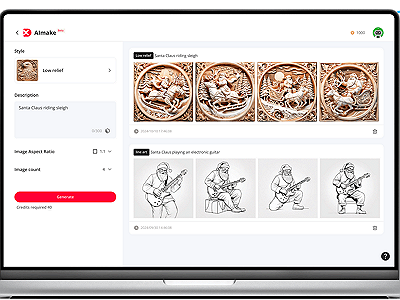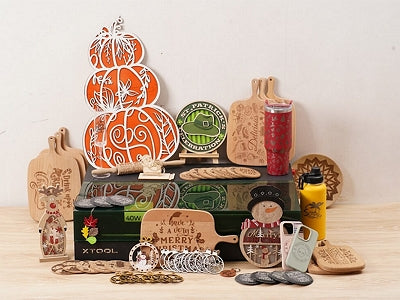How to Sell Art on Etsy?
Artist? Looking for a way to turn your passion craft into cash? Selling your original artwork in galleries is one way, but if you want to start small and make a name, Etsy is your best bet to generate passive income.
For those who are new to the digital world and unsure where to begin, this blog post is your guiding star – it covers all the steps selling art on Etsy.
In This Article
- Step 1: Deciding What Art to Sell
- Step 2: Setting up Your Etsy Shop
- Step 3: Creating Listings that sell
- Step 4: Pricing Your Art
- Step 5: Marketing Your Etsy Shop
- FAQs on Selling Art on Etsy
- Conclusion
Step 1: Deciding What Art to Sell
The days of starving artists are behind us. Now, art is a lucrative business venture, standing shoulder to shoulder with other fields. For those with genuine interest and creativity, making money from art is simple. There are ways to sell it.
But what should you sell? You have three options: sell original art, sell art prints, or sell digital art files. Each option has its advantages. Remember, 'variety is the spice of life,' and offering different types of art can attract a wider audience.
Original Art
The default option that every artist has been opting for traditionally is tangible art – be it in the form of sculpture, painting, or illustration, and sell it to the interested buyer.
You can also offer customized painting services i.e. special portraits, natural landscapes, or conversion of a digital image into a portrait.
Wall art is another option. Choose a material and engrave it with a design—it’s a popular category.
Earlier, making art required hand precision and a creative mind. Creativity is still needed, but tools are available that can help achieve precision. For instance, desktop laser cutting and machines let you precisely cut intricate designs out of hundreds of materials. Engraving a design out of material is also possible. Explore more on how laser machines have revolutionized art crafts.

Artworks made with xTool laser machines
Art Prints
Another creative way is making art and then printing it on different items like caps, shirts, mugs, tote bags, stickers, and postcards. There's a huge demand for such customized items on Etsy.
For art printing, options are multiple—digital printing, screen printing, sublimation printing, and heat transfer. Screen printing is an artist's favorite as it allows them to achieve desired textures and vibrant colors.
Screen printing may seem long and tedious for beginners. But xTool’s screen printer makes things simple. It’s a one-of-a-kind complete screen printing solution that employs laser engraving for preparing stencils. It comes with pre-coated stencils, which can be laser engraved with the design and then used immediately for screen printing.

What's more, it includes all the additional accessories needed to start screen printing: inks, spatulas, stencil screens, and squeegees. No more hunting for individual tools—everything comes in the screen printing package.
Digital Art
It’s not necessary that you only sell physical art items; digital art is equally popular. For instance, you can start selling design files for various art designs, such as festive themes or decor-related pieces. There’s also the option to sell laser-cut files that crafters can use to create tangible items with a laser cutter.
Handling digital art is easy—no need for inventory; you just share the digital file. These could be generic art designs you create once and sell multiple times. Even digital illustrations and paintings are gaining popularity.
Step 2: Setting up Your Etsy Shop
First, create an Etsy account if you don't have one. It's better to use the desktop version for setting up, though you can manage it later with the app. Remember, the language you choose cannot be altered later, so pick one you’re comfortable with.
Click “Get Started” and fill in the required shop information, including your shop’s language, country, and currency.

Choose a distinctive and memorable name for your shop that captures your brand essence. Etsy requires shop names to be between 4-20 characters without spaces or special symbols. If your first choice is unavailable, Etsy will offer alternative suggestions.

For payment setup, link your bank account to receive funds and add a debit or credit card for handling Etsy fees. Follow Etsy’s location-specific instructions to complete this step.

You can even enhance shop’s security by enabling two-factor authentication, which sends verification codes via an authenticator app, SMS, or phone call.

After your shop is created, focus on designing your storefront. Upload professional photos for your banner and logo to showcase your brand’s identity. Craft a welcoming message for your visitors and share your brand’s story in the About section using videos or images. Highlight what makes your business special and introduce any team members or collaborators.
Clearly state your policies for shipping, returns, exchanges, payments, and custom orders. Create shipping profiles to inform customers about shipping costs and options, and decide whether to offer free shipping or charge based on location.

Step 3: Creating Listings that sell
Creating effective listings is key to selling your art on Etsy. Express and display your products properly. Use high-quality photos and videos to show your products from different angles and settings. Show close-ups of design details, and if possible, clips of the creation process. This helps buyers understand what they're purchasing and builds trust.

Optimize your listings for search engines with clear, descriptive titles containing important keywords. Start with these keywords at the beginning of the title. Avoid keyword stuffing; write natural and appealing titles.
In your descriptions, lead with the most important information. Use short paragraphs and bullet points for easy reading. Highlight key details like size, material, and unique features.
Use all 13 tags available, focusing on multi-word phrases. Instead of using the keywords “custom” and “art”, try using ‘custom art’ or ‘abstract art’. Think of synonyms and regional phrases to reach a wider audience. Categories and attributes act like tags, so add specific options for your item.
Keep a consistent brand voice. If you’re a solo operator, use the first person to create a personal connection with buyers. Use relevant keywords naturally in the first few sentences without repeating the title verbatim.
Step 4: Pricing Your Art
Pricing can be challenging. It shouldn’t be too high, as you might miss your target audience. Set your prices based on your experience, the materials used, canvas size, and the time required.
If you’re a beginner, start with lower prices, build an audience, gather reviews, and gradually increase your prices. One way to price is based on time. According to Indeed, the average salary of an artist is $21.53 per hour. You can set a price range based on the number of hours spent on an art piece.
We have seen Etsy sellers list art pieces with varying prices. On average, pricing falls between $4 to $6 per square inch.
Step 5: Marketing Your Etsy Shop
You’ve built a shop; now you need customers. Start with friends and family, and ask them to spread the word through their social media channels. But that alone won’t suffice. You need a solid marketing strategy.
Begin with Etsy Ads. After opening your Etsy shop, wait for 15 days before starting an Etsy Ads campaign. Set your budget and choose which listings to advertise. Etsy uses its data insights to show your ads at the best times and places, maximizing visits within your budget.
Etsy also offers offsite advertising. It promotes your listings across the web, including on search engines and social media. You only pay an advertising fee when you make a sale. This service is optional for new sellers
FAQs on Selling Art on Etsy
Is it worth selling art on Etsy?
Yes, selling art on Etsy is worth it. Etsy is well-known for handmade items, and art prints and illustrations are among the top-selling categories. It's a market worth exploring for any artist.
How much can you make selling art on Etsy?
On average, successful sellers make around $40,000 annually. Even as a side venture, you could easily earn $20,000 to $25,000 from Etsy.
Conclusion
Art is a wonderful pastime and an excellent way to generate passive income. And Etsy is the ideal platform to sell your creative pieces, whether they are printed or digital.
For printed art, xTool offers a suite of screen printing accessories that make art selling simple and accessible to everyone. Try the xTool screen printer and watch your art business flourish!




